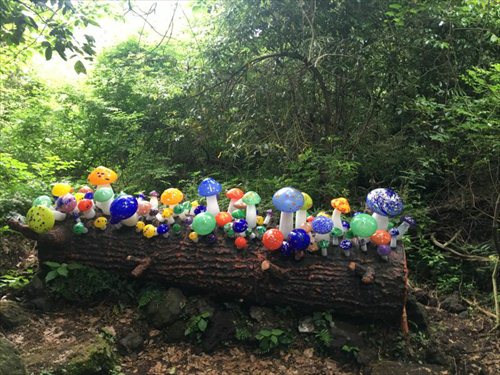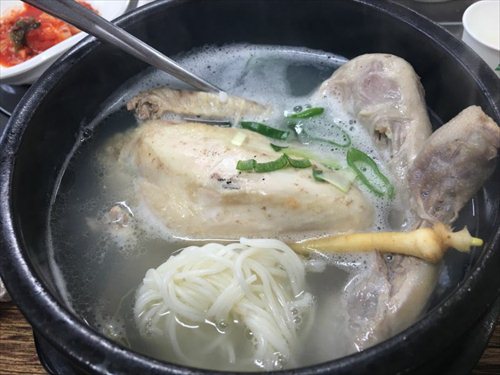Dive into Jeju
The island of ‘three plenties’
An hour-and-a-half flight away from Shanghai, Jeju island in South Korea is an ideal destination for a short journey abroad for its balanced natural beauty and unique customs.
Jeju is a fair-sized island with the airport and business area in the north, Halla Mountain in the middle and natural scenery in the south and east. It takes about four hours to do a round trip by car.

Jeju island in South Korea is an ideal destination for a short journey abroad for its balanced natural beauty and unique customs. Photos: Qi Xijia/GT
Created by volcanic eruptions approximately 1.2 million years ago, the island is known for its "three plenties": an abundance of wind, stones and women.
To guard homes from wind, old houses have a low roof. They are made of stone and covered with thatch.
For the same reason, new buildings and hotels in Jeju aren't tall as well. Most of them are fewer than 10 stories.
Legend has it that life on the island contributed to the skewed ratio of women to men. In ancient times, men took voyage at sea while women stayed home. Sometimes, husbands never made it back.

To pray for their safe return, people in Jeju created a mascot, a stone statue of an old man (pictured above). Many believed it held a close relationship with reproductive worship.
Today, it's nicknamed the stone grandpa. It has bulging eyes, a big nose and thin lips. It is said that if you touch its nose, you will have a boy, touch its belly and you will be wealthy.
Because of the imbalanced population, women in former times held a very low status. A man could have many wives, and the first wife to bear a boy enjoyed the highest status among all wives. She could stay home and raise the children, while the rest labored. They marched to Halla Mountain to fetch water, fed the animals and caught fish to sell.
Though women's status has improved, sea fishing is still a tradition. Women called Haenyeo dive into the sea to catch marine animals, without any sophisticated diving equipment.
They can dive down to 20 meters and hold their breath for more than three minutes. Their prey are abalone, conch, seaweed and Ceylon moss.
In South Korea, they represent the strong woman and mother of Jeju. They usually work two weeks a month, using a buoy to alert passing boats of their presence.
Even so, every year many Haenyeo drown. Because of the hardships, few young women become Haenyeo.
The youngest of them are in their middle years, and the oldest Haenyeo is over 90 years old. If you are lucky, in good weather you can see them along some coastal areas.
The island also boasts three things that it does not have: beggars, thieves or locked gates. You feel quite safe and pleasant walking on the street.
The streets are spotless. It's difficult even to find a litter bin, and everyone carries their rubbish until finding one.
Jeju people also follow rubbish classification strictly. They discard food waste, napkins and tableware separately.
While roaming the streets, you will find a lot of interesting museums. The Juji Glass Museum is one you shouldn't miss.
Nearly everything in it is made from glass, from the mirror maze, the floating glass lotus to the glass dinosaurs.
For those who love exploring nature, there is a jungle decorated with glass.

The entrance features fierce dinosaurs, followed by a huge butterfly, crystal cobweb, deer, bright mushrooms (above) and pumpkins.
Walking deeper and deeper into the jungle, you leave the rest of the building behind, and you only want to move forward to see what awaits, as if entering Alice's wonderland.
In the afternoon, it is nice to take a walk along the dike, next to the clear water, and enjoy the slow-paced life.
You may meet a lot of Koreans slowly walking their dogs, taking the time to enjoy nature. Some may try their Putonghua with you and offer to take photos.
Spending an afternoon with them will definitely quash your desire to go shopping, even if it's your original intention to visit.
Around the dike are some shops selling fresh seafood. They raise squid and striped fish in water tanks.

Other delicacy include ginseng chicken soup (above) served in a hot stone pot, black pork barbecue and Jeju mandarins.